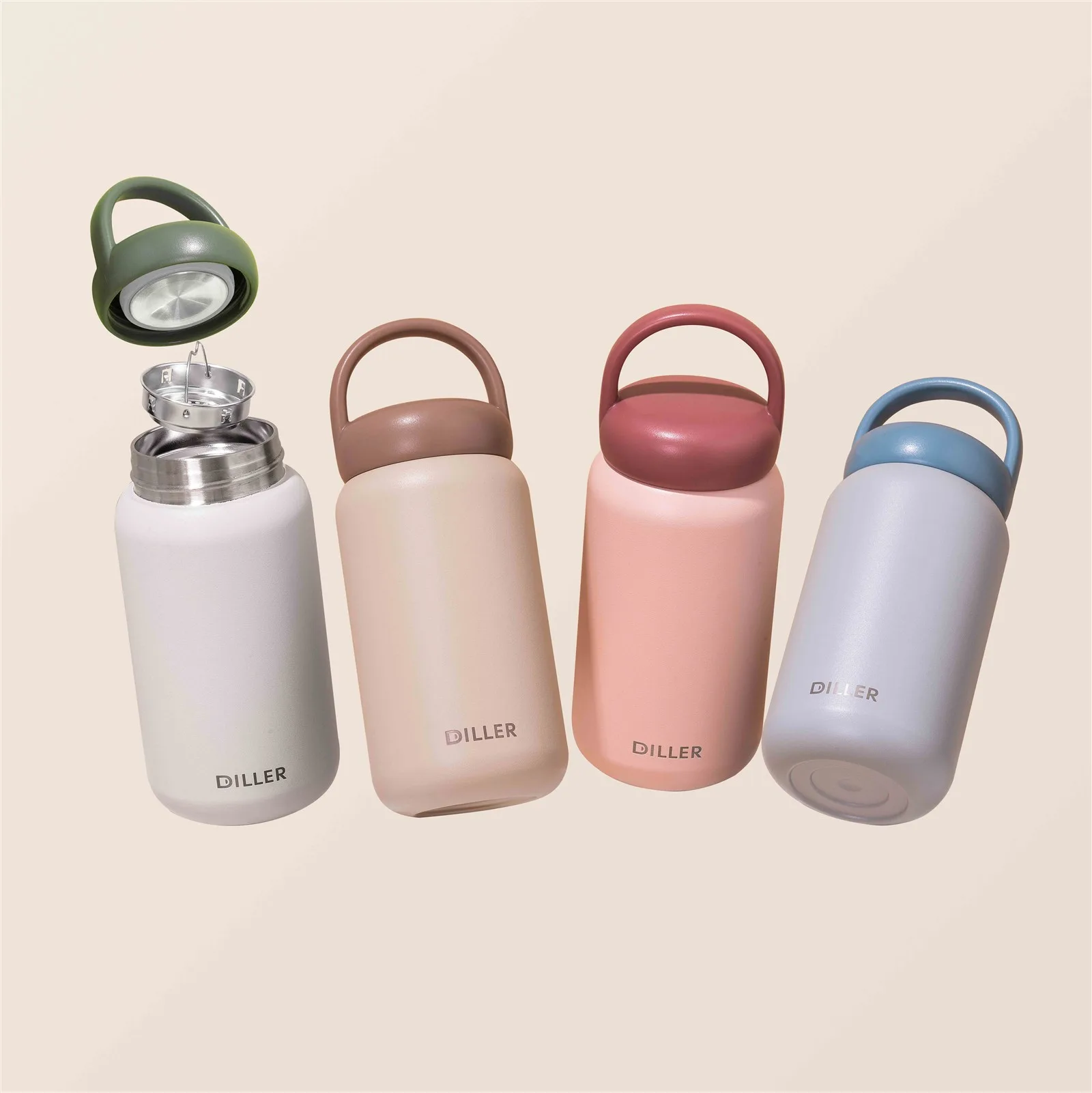Cawan bertebat keluli tahan karat, sebagai keperluan harian yang sangat diperlukan dalam kehidupan seharian, mempunyai kesan yang ketara ke atas keberkesanan penebat, ketahanan, dan kesihatan dan keselamatan kerana pemilihan bahannya. Pada masa ini, bahan cawan penebat keluli tahan karat biasa di pasaran termasuk keluli tahan karat 304, keluli tahan karat 316 dan keluli tahan karat 316L. Berikut akan membandingkan cawan penebat keluli tahan karat bahan yang berbeza dari perspektif kelebihan dan kekurangan.
Keluli tahan karat 304 ialah keluli tahan karat kromium nikel biasa dengan rintangan kakisan yang sangat baik, rintangan haba, kekuatan tinggi dan prestasi suhu rendah yang baik.
Komposisi kimia keluli tahan karat 304 terutamanya termasuk unsur-unsur seperti besi, kromium, nikel, karbon, silikon, mangan, fosforus, sulfur, dll. Antaranya, kandungan kromium dan nikel adalah agak tinggi, masing-masing pada 18% dan 8%, yang menjadikan keluli tahan karat 304 mempunyai rintangan kakisan yang tinggi dalam media pengoksidaan dan berasid. Selain itu, keluli tahan karat 304 juga mempunyai rintangan haba yang baik dan boleh mengekalkan prestasi yang stabil pada suhu tinggi. Di samping itu, keluli tahan karat 304 juga mempunyai kekuatan tinggi dan prestasi suhu rendah yang baik, yang boleh mengekalkan prestasi cemerlang dalam persekitaran suhu rendah.
Keluli tahan karat 304 digunakan secara meluas dalam pelbagai bidang, seperti bekas makanan, peranti perubatan, peralatan kimia, peralatan perlindungan alam sekitar, struktur bangunan, dll. Ia boleh digunakan untuk membuat pinggan mangkuk, peralatan dapur, peralatan perubatan, peralatan kimia, bahagian automotif, bangunan bahan, dan produk lain.
Perlu diingat bahawa walaupun keluli tahan karat 304 mempunyai rintangan kakisan dan kestabilan yang tinggi, ia masih perlu untuk mengelakkan sentuhan jangka panjang dengan bahan menghakis seperti asid kuat dan alkali semasa digunakan untuk mengekalkan sifatnya yang sangat baik. Sementara itu, disebabkan kos keluli tahan karat 304 yang tinggi, keseimbangan antara kos ekonomi dan prestasi perlu dipertimbangkan semasa menggunakannya.
Keluli tahan karat 316 ialah sejenis keluli tahan karat yang mengandungi molibdenum, yang mempunyai rintangan kakisan dan kekuatan yang lebih tinggi.
Komposisi kimia keluli tahan karat 316 terutamanya termasuk unsur-unsur seperti besi, kromium, nikel, karbon, silikon, mangan, fosforus, sulfur, dll. Antaranya, kandungan kromium dan nikel adalah agak tinggi, masing-masing pada 16% dan 10%, sambil mengandungi sejumlah unsur molibdenum, yang menjadikan keluli tahan karat 316 mempunyai rintangan kakisan yang lebih tinggi dalam pengoksidaan dan media berasid. Di samping itu, keluli tahan karat 316 juga mempunyai kekuatan tinggi dan prestasi suhu rendah yang baik, yang boleh mengekalkan prestasi yang baik dalam kekuatan tinggi dan persekitaran rintangan kakisan yang tinggi.
Keluli tahan karat 316 digunakan secara meluas dalam pelbagai bidang, seperti peranti perubatan, peralatan kimia, peralatan perlindungan alam sekitar, bekas makanan, dll. Ia boleh digunakan untuk menghasilkan produk seperti peranti perubatan, peralatan kimia, bekas makanan, komponen automotif, dan bangunan bahan.
Perlu diingat bahawa walaupun keluli tahan karat 316 mempunyai rintangan kakisan dan kestabilan yang tinggi, ia masih perlu untuk mengelakkan sentuhan berpanjangan dengan bahan menghakis seperti asid kuat dan alkali semasa digunakan untuk mengekalkan sifatnya yang sangat baik. Sementara itu, disebabkan kos keluli tahan karat 316 yang tinggi, keseimbangan antara kos ekonomi dan prestasi perlu dipertimbangkan semasa menggunakannya.
Perbezaan utama antara keluli tahan karat 316 dan keluli tahan karat 316L adalah seperti berikut:
1. Kandungan karbon: Kandungan karbon keluli tahan karat 316L adalah lebih rendah daripada keluli tahan karat 316, dengan yang pertama umumnya kurang daripada 0.03% dan yang terakhir umumnya kurang daripada 0.08%.
2. Kandungan kromium: Kandungan kromium keluli tahan karat 316L adalah lebih tinggi daripada keluli tahan karat 316, dengan kandungan kromium umumnya melebihi 16% dan yang kedua secara amnya melebihi 17%.
3. Rintangan kakisan: Oleh kerana kandungan karbon rendah keluli tahan karat 316L, rintangan kakisannya lebih baik daripada keluli tahan karat 316.
4. Kekuatan dan kekerasan: Oleh kerana kandungan karbon rendah dan kandungan kromium yang tinggi bagi keluli tahan karat 316L, kekuatan dan kekerasannya lebih tinggi daripada keluli tahan karat 316.
5. Bidang aplikasi: Keluli tahan karat 316 sesuai untuk beberapa produk keluli tahan karat biasa, seperti pinggan mangkuk, peralatan dapur, dll; Keluli tahan karat 316L sesuai untuk aplikasi permintaan tinggi seperti peranti perubatan dan peralatan kimia.
Secara keseluruhan, keluli tahan karat 316L mempunyai rintangan kakisan dan kekuatan yang lebih baik berbanding dengan keluli tahan karat 316, dan bidang aplikasinya juga lebih luas.


